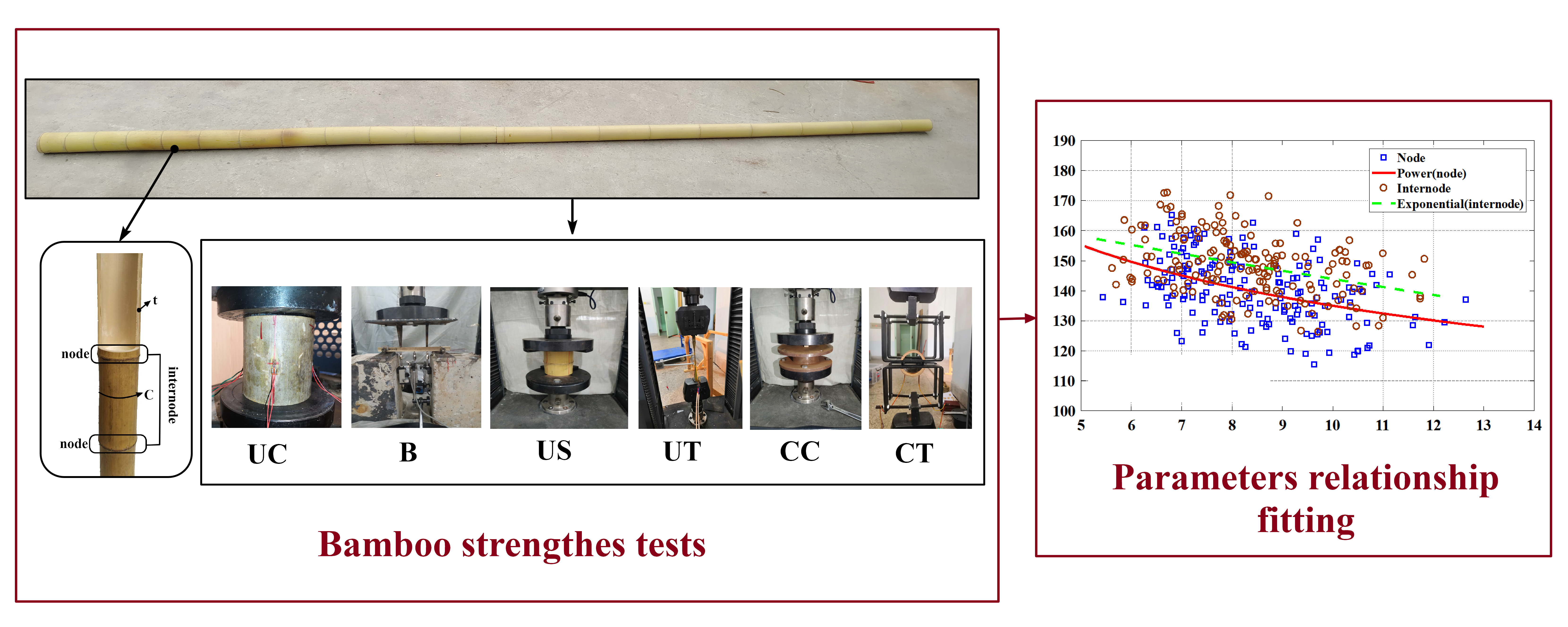 Open Access
Open Access
ARTICLE
Prediction of Mechanical Properties of Structural Bamboo and Its Relationship with Growth Parameters
School of Civil Engineering, Central South University, Changsha, 410075, China
* Corresponding Author: Qishi Zhou. Email:
Journal of Renewable Materials 2021, 9(12), 2223-2239. https://doi.org/10.32604/jrm.2021.015544
Received 26 December 2020; Accepted 24 February 2021; Issue published 22 June 2021
Abstract
Bamboo is a renewable natural building material with good mechanical properties. However, due to the heterogeneity and anisotropy of bamboo stalk, a large amount of material performance testing costs are required in engineering applications. In this work, longitudinal compression, bending, longitudinal shear, longitudinal tensile, transverse compression and transverse tensile tests of bamboo materials are conducted, considering the influence of the bamboo nodes. The mechanical properties of the whole bamboo stalk with the wall thickness and outer circumference are explored. Through univariate and multiple regression analysis, the relationship between mechanical properties and wall thickness and perimeter is fitted, and the conversion parameters between different mechanical properties are derived. The research results show that the transverse compressive strength of nodal specimen, and transverse tensile strength of nodal and inter-node specimens increase with the increase of wall thickness and outer circumference, but other mechanical properties decrease with the increase of wall thickness and outer circumference. The prediction formula and conversion parameters of bamboo mechanical properties proposed in this research have high applicability and accuracy. Moreover, this research can provide references for the evaluation of bamboo performance and saving test costs.Graphic Abstract

Keywords
Cite This Article
Citations
 Copyright © 2021 The Author(s). Published by Tech Science Press.
Copyright © 2021 The Author(s). Published by Tech Science Press.This work is licensed under a Creative Commons Attribution 4.0 International License , which permits unrestricted use, distribution, and reproduction in any medium, provided the original work is properly cited.


 Submit a Paper
Submit a Paper Propose a Special lssue
Propose a Special lssue View Full Text
View Full Text Download PDF
Download PDF

 Downloads
Downloads
 Citation Tools
Citation Tools